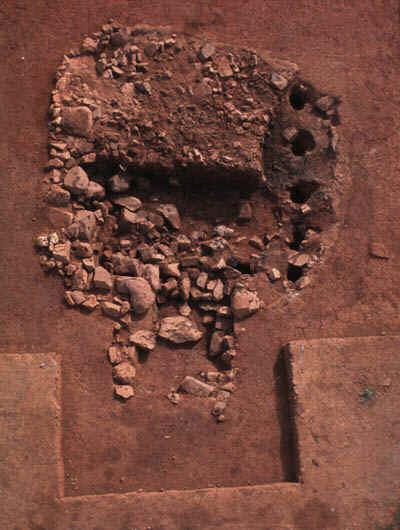 |
June 7 through July 29, 1999 |
 |
June 7 through July 29, 1999 |
The Department of Sociology and Anthropology at James Madison University will conduct its 23rd Archaeological Field School during the summer of 1999. As in the past, the program will provide a quality academic and field experience for those interested in learning the methods and techniques of archaeological site identification, testing and excavation. In attaining these goals, students will participate in two field projects. The principle focus of the program will include participation in an on-going program of excavation, site analysis, and 18th century artifact identification at James Madison's plantation home, Montpelier, in Orange County, Virginia. In addition, students will participate in a program of archaeological survey, testing and assessment of encampment and military features at Fort Edward Johnson, a Confederate earthwork in Augusta County, Virginia, constructed in 1862 in conjunction with Thomas J. "Stonewall" Jackson's "Valley Campaign." An exception to this will be the second, four week option. As developed below, this program will focus soley on the Civil War era archaeology associated with Fort Edward Johnson.

James Madison's Montpelier, Orange County,
Virginia
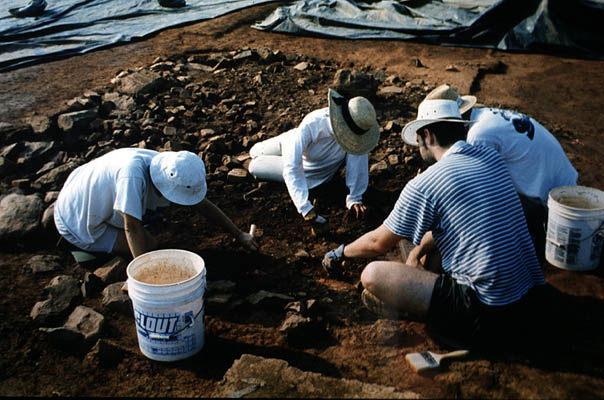 |
James Madison's Montpelier
|
 |
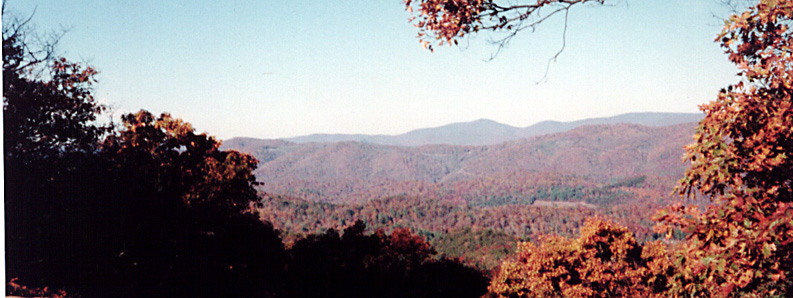
View of the Valley of Shaw's Fork and the area of Union
Advance from Fort Johnson
As part of "Stonewall" Jackson's 1862 Valley Campaign, the Confederate earthwork known as Fort Edward Johnson was constructed on the apex of Shenandoah Mountain as a guard against potential Union invasion of the Shenandoah Valley from the west. This fortification is one of only three principal earthworks constructed by the Confederacy in the Valley, and was situated to control the Staunton-Petersburg Turnpike. During the summer of 1998 JMU students identified the principal remains of the earthwork and an extensive array of cultural features associated with Camp Shenandoah, the area of encampment for General Johnson's 3,500 man army. During the 1998 seasons students will continue field survey as needed to complete the definition of the military complex and will comprehensively evaluate the archaeological integrity of a sample of the military structure and encampment areas. This work will include the examination of the Mountain House Inn, an early structure complex that served the needs of travelers in the area since 1839 and which was placed centrally within Camp Shenandoah. Field techniques to be introduced to students will include: field survey and site identification, GPS and topographic mapping, feature testing and excavation, and systematic strategies of metal detector survey.
| Earthwork at North End of Fortification | Mountain House Inn, part of Camp Shenandoah | Example of Typical Confederate Hearth |
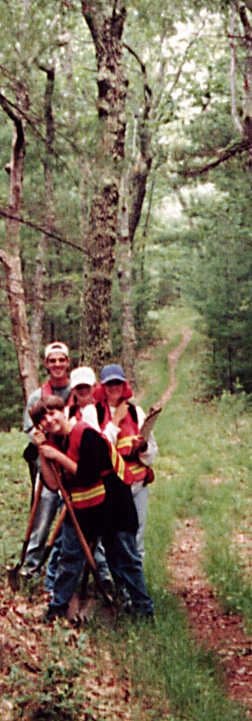 |
Who Should Apply.... This program is designed to introduce students to the diverse and varied methods and techniques of archaeological survey, artifact identification, and excavation. It assumes no prior knowledge on the part of the student participant, nor does it require a personal commitment to a particular field of study or major. As sincere interest to learning through practice and participation is expected. Students will be held to appropriate standards of professionalism. Enrollment and Schedule:Students may enroll for either 4, 6 or 8 undergraduate or graduate credits, with an additional 3 credits being available though an associated internship program. The 8-credit term will be continuous from June 7 to July 29, 1999. The 6-credit course will begin on the same date but will end two weeks earlier. The 4-credit terms will correspond to the first or second four weeks of the eight week session (Starting dates are June 7 and July 5). In providing field research opportunities, students taking the first four week program will spend one of the four weeks in Harrisonburg on excavation projects associated with Fort Johnson, the remaining weeks focusing on the excavations at Mount Pleasant. For those taking the six week program, the sixth week will be spent in Harrisonburg. The eight week students will spend the last three weeks in Harrisonburg and those choosing the second, four week program starting on July 5 will be involved in a program of Civil War focused archaeology only. These students will spend the full four weeks in Harrisonburg. During the course of the program, students will be expected to spend four, ten hour days, Monday through Thursday, participating in diverse aspects of field study and laboratory investigation. For students with professional aspirations, the 6 or 8 credit course is recommended as they provide much greater opportunity to develop and learn basic field skills. |
| Right Foot in Highland, Left in Augusta |
Tuition for the summer term of 1998 undergraduate tuition was computed at a rate of $64 per credit hour in-state and $225 per credit hour out-of-state. Graduate credit could be calculated at a rate of $114 per credit hour, in-state; and $367 per credit hour, out of state. As of this date, rates for the 1999 summer term have not been established.
Students accepted into the program will receive educational stipends that can be applied to the cost of their tuition. These stipends are provided through grants from the National Trust for Historic Preservation and the National Forest Service. At present the value of these stipends has not been fixed.
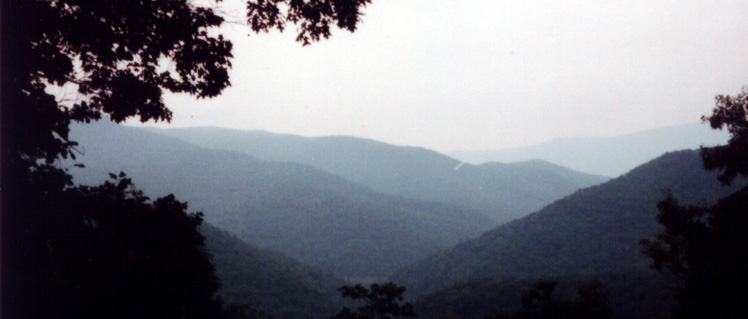
View of Ramsey's Draft and Camp Shenandoah Locale
from the Fort Johnson Earthwork
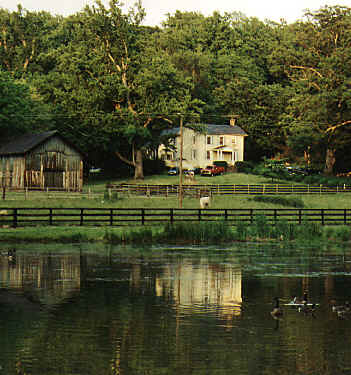 |
Housing:While at Montpelier, housing will be provided at no cost. Students will stay in the dormitory building pictured to the left. While in Harrisonburg, student housing can be arranged in JMU campus facilities as needed. Information on these facilities and their modest costs will be provided to applicants. While at Montpelier, kitchen facilities will be made available to students to prepare their own meals. |
Student Dormitory at Montpelier |
Participation in the field school is by application only. It is not open enrollment. Applications must be obtained from the office of the Department of Sociology and Anthropology, 122 Sheldon Hall, James Madison University, Harrisonburg, Va. 22807.